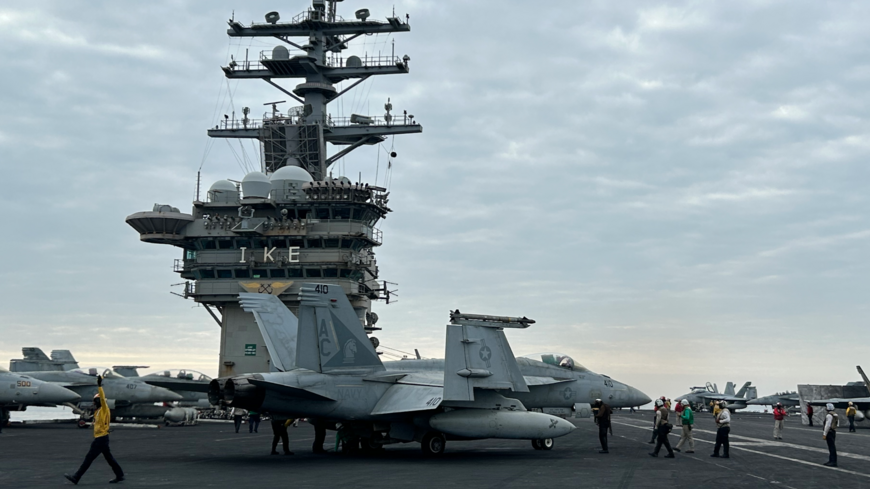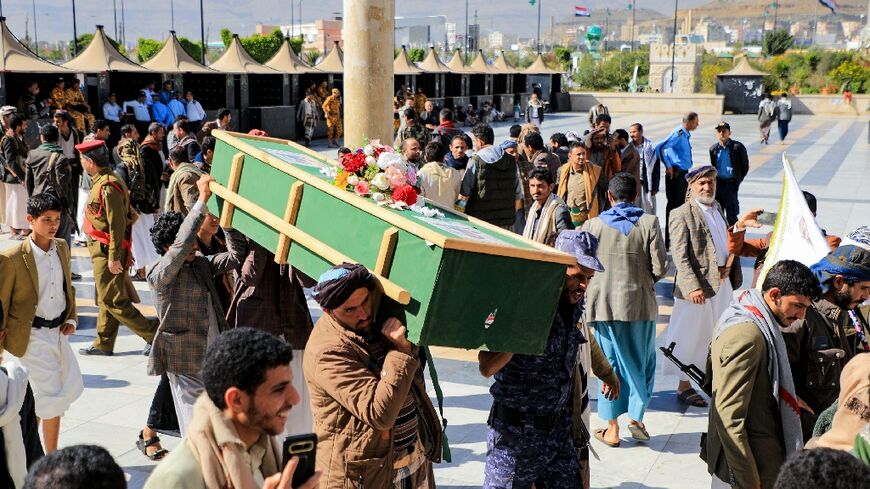US, UK launch new round of airstrikes against Yemen's Houthis
The Houthis reported the highest death toll yet of the US and UK strike campaign.

US F/A-18s and UK Royal Air Force Typhoons carried out a new round of airstrikes against Houthi-controlled areas of Yemen overnight on Thursday in response to a renewed wave of missile and drone attacks by the rebels on commercial shipping in the southern Red Sea.
"Between approximately 3:15 and 5 p.m., Sanaa time, on May 30, US Central Command forces successfully destroyed eight uncrewed aerial vehicles in Iranian-backed Houthi controlled areas of Yemen and over the Red Sea," CENTCOM said in a press release.
US and UK fighter aircraft also struck 13 targets in Yemen "in self-defense," CENTCOM said. "It was determined that these UAVs and sites presented a threat to US and coalition forces and merchant vessels in the region. These actions are necessary to protect our forces, ensure freedom of navigation and make international waters safer and more secure for US, coalition and merchant vessels."
The Pentagon has not publicly released any information on the nature or location of the targets. But the UK Defense Ministry said Royal Air Force Typhoon FGR4s partaking in the overnight strikes hit buildings at two locations in Hodeidah and other facilities further south along the coast at Ghulayfiqah.
The UK Defense Ministry said its intelligence indicated the target buildings at all three locations were linked to the Houthis' drone attacks on commercial shipping off Yemen's coast.
"Intelligence had confirmed two locations near [Hodeidah] as being involved with the Houthi anti-shipping attacks, with a number of buildings identified as housing drone ground control facilities and providing storage for very long range drones, as well as surface to air weapons used to impede coalition operations to safeguard shipping in the region," the statement read.
Why it matters: The Houthis said 16 people were killed and 42 wounded, marking the highest recorded death toll of the campaign the United States and United Kingdom kicked off in January in a bid to clamp down on the Houthi attacks.
Houthi media claimed that civilian homes were bombed overnight on the Red Sea coast and said a building housing a radio station in Hodeidah was struck. Explosions were also reported in Sanaa.
The US and UK have not confirmed any civilian casualties. "As ever, the utmost care was taken in planning the strikes to minimise any risk to civilians or non-military infrastructure. Conducting the strikes in the hours of darkness should also have mitigated yet further any such risks," the UK Defense Ministry statement read.
What's next: The airstrike campaign is heating up once again, but Western officials say they have little expectation the Houthis will back down anytime soon.
The Yemeni rebels have vowed to continue their attacks on what they describe as international shipping linked to Israel until Israel ends its war in the Gaza Strip.
"The American-British aggression will not prevent us from continuing our military operations in support of Palestine, and we will meet escalation with escalation," Muhamad al-Bukhaiti, a member of the Houthis' political bureau, wrote on X.
US F/A-18s launched from the USS Eisenhower have led a campaign of mid-air interceptions over the southern Red Sea to protect international shipping and coalition ships patrolling commercial waterways.
Houthi spokesperson Yehiya Saree on Friday said his side had retaliated with a drone and ballistic missile attack against the Eisenhower. US defense officials pushed back, however, saying no such attack materialized.
Since the start of the campaign early this year, senior US commanders have acknowledged that their intelligence underestimated the size of the Houthis' Iranian-made missile and drone stockpiles, leaving an open question as to how long the campaign to degrade the militia's weaponry will take.
The Biden administration has not authorized the military to target Houthi leadership, but rather to neutralize its weapons capabilities. In February, the top US Navy commander in the Middle East acknowledged the strikes had failed to deter the rebels.
Know more: The latest round of strikes also came just two days after the Houthis claimed to have shot down a US MQ-9 drone over Marib province. US Central Command has not claimed the drone.
Last week, a senior Pentagon official acknowledged concerns that the Yemeni rebels can now range the Mediterranean Sea with their projectiles. The official did not specify whether Houthi weaponry would be precise at that range.






